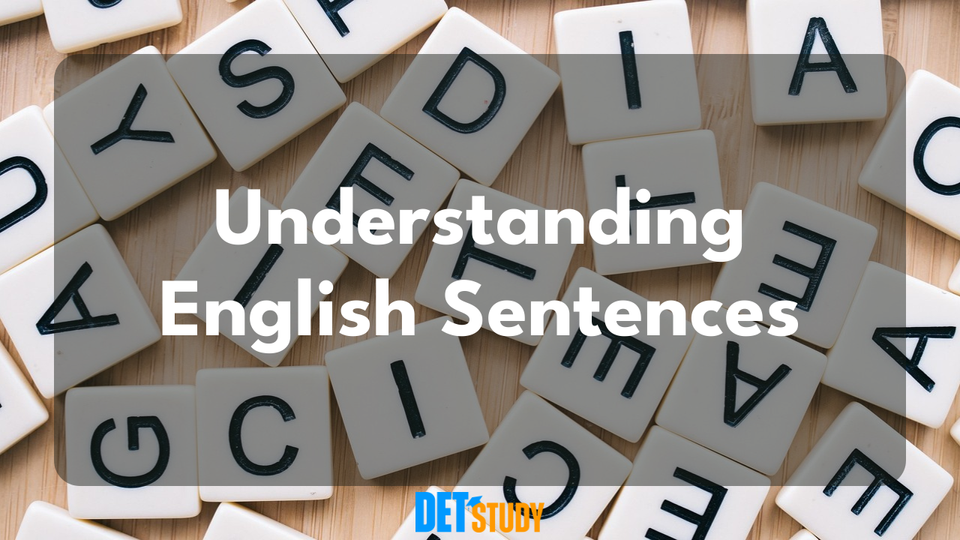Aloud and Understanding: Exploring English Sentences for Better Pronunciation and Comprehension

Understanding the Word "Aloud"
The word "aloud" often appears in both written and spoken English. It is an adverb that describes saying something in a voice loud enough to be heard. This guide will help you understand how to use "aloud" effectively in sentences.
5 Tips for the Read Then Speak Question: Duolingo English TestDefinition
- Aloud: When you speak aloud, you are using your voice at a volume that others can hear, as opposed to whispering or thinking silently.
Example Sentences
-
Reading Aloud: - "She read the poem aloud to the class so everyone could hear." - In this sentence, "aloud" emphasizes that her voice was loud enough for the entire class to hear the poem.
-
Thinking Aloud: - "He often thinks aloud when solving complex math problems." - Here, "aloud" conveys that he vocalizes his thoughts so others nearby can hear, perhaps unintentionally.
-
Speaking Aloud: - "He spoke aloud in front of the audience to present his ideas." - The usage here indicates that the speaker’s voice was projected so the audience could hear.
Usage Tips
-
Aloud vs. Out Loud: Both "aloud" and "out loud" are often used interchangeably. However, "aloud" tends to be more formal, whereas "out loud" is commonly used in casual speech.
-
Emphasis: Using "aloud" can add emphasis to the action of speaking or reading, highlighting that it is meant to be heard by others.
Common Contexts
-
Classroom Settings: Teachers might ask students to read passages aloud to practice pronunciation and clarity.
-
Public Speaking: When delivering speeches, speakers prepare to project their voices aloud so audiences can listen.
-
Problem Solving: Thinking aloud is a technique used in workshops or group settings to foster discussion and collaborative problem-solving.
By understanding how to use "aloud" in different contexts, you can enhance your communication skills and comprehension in English.
Common Mistakes with "Aloud" in Sentences
"Aloud" is commonly used in English, but it can sometimes be tricky for learners because it sounds similar to "allowed." Here are some common mistakes and tips to help you use "aloud" correctly:
Mistake 1: Confusing "Aloud" with "Allowed"
- Incorrect: She is not aloud to go to the party.
- Correct: She is not allowed to go to the party.
Tip: Remember, "allowed" means to have permission, while "aloud" is related to speaking in a voice that can be heard clearly.
Mistake 2: Using "Aloud" When It Is Not Needed
- Incorrect: He speaks aloud when he is on the phone.
- Correct: He speaks loudly when he is on the phone.
Tip: Use "aloud" when you want to emphasize that something is said so it can be heard, especially in contrast to being silent or whispered. Use "loudly" to describe the volume of the speech.
Mistake 3: Misplacing "Aloud" in the Sentence
- Incorrect: She wanted aloud to read the story.
- Correct: She wanted to read the story aloud.
Tip: "Aloud" often follows verbs like "read," "say," or "think" to indicate the action is performed in an audible manner. Place "aloud" after the verb to clarify the action's manner.
Practice English NowMistake 4: Overusing "Aloud"
- Incorrect: He thought aloud about the problem in his mind.
- Correct: He thought about the problem in his mind.
Tip: Use "aloud" specifically when you are indicating that thoughts are expressed vocally. If thinking is internal and silent, "aloud" is not appropriate.
By understanding these common mistakes and tips, you can effectively use "aloud" in the right context in your English sentences.
How to Use "Aloud" Correctly
Understanding the word "aloud" and how to use it correctly can enhance your English communication skills. Here's a breakdown to help you master it:
Definition of "Aloud"
The word "aloud" is an adverb that describes speaking or making a sound so that it can be heard by others. It is often used to indicate that something is not whispered or done silently.

Examples of "Aloud" in Sentences
-
Reading Aloud: - He read the story aloud to the children at bedtime. - Explanation: Here, "aloud" is used to describe reading in a way that others can hear.
-
Speaking Aloud: - She laughed aloud at the comedian's jokes. - Explanation: The use of "aloud" indicates that the laughter was audible to others.
-
Thinking Aloud: - I often think aloud when trying to solve a difficult problem. - Explanation: "Aloud" in this context means the person verbalizes their thoughts so they can hear them too.
Important Points to Remember
- Pronunciation Aid: Using "aloud" can help in pronunciation and comprehension by verbalizing words clearly.
- Not Whispering: "Aloud" contrasts with speaking in a whisper or silence. It emphasizes clarity and volume in communication.
- Common Confusion: Do not confuse "aloud" with "out loud." While both are generally interchangeable, "out loud" is more informal and commonly used in everyday speech.
Practice Exercise
Try creating your own sentences using "aloud":
- Write a sentence where you use "aloud" in the context of reading.
- Use "aloud" to describe someone expressing emotions.
- Imagine thinking through a problem and describe it using "aloud."
Practicing these examples can ensure that you feel confident when deciding when and how to use "aloud" in conversation and writing.
Save Money on Your Duolingo English Test with Official Coupon CodeExamples of Sentences Using "Aloud"
Using the word "aloud" correctly can make your spoken English clearer and more precise. Here are some examples of how "aloud" can be used in sentences:
-
Reading Practice - She read the poem aloud to the class, ensuring everyone could hear her interpretation. - "Please read the instructions aloud so everyone knows what to do," the teacher instructed.
-
Expressing Thoughts - He accidentally said his secret thoughts aloud, causing everyone to turn and look at him. - When you're studying, try saying key points aloud to improve your memory.
-
Sharing Emotions - The children laughed aloud at the clown's funny antics during the circus performance. - She was so relieved that she cried aloud with joy when she received the good news.
-
Performing or Narrating - During the play, the actor delivered his monologue aloud with passion and clarity. - The storyteller spoke the tale aloud, captivating the audience with her engaging voice.
By using "aloud" in these contexts, you can effectively communicate the action of speaking or reading out loud. Remember, "aloud" emphasizes the audibility of sound to listeners.
Practice Exercises for Using "Aloud"
The word "aloud" can be used to indicate that something is being spoken or read in a voice that can be heard, distinguishing it from thoughts or actions done silently. Here are some exercises to help you practice using "aloud" correctly:
Exercise 1: Fill in the Blanks
Complete the sentences by choosing the correct word: "aloud" or "allowed."
- During the test, students are not ____ to use their phones.
- She read the poem ____ to the entire class.
- Laughter ____ could be heard from the next room.
- Visitors are not ____ to take photographs in the museum.
- The teacher said it was okay to think ____ to better understand the problem.
Exercise 2: Sentence Rewriting
Rewrite the following sentences to include the word "aloud."
-
The little girl enjoyed reading her story quietly. - The little girl enjoyed reading her story aloud.
-
I always understand the text better when it's spoken. - I always understand the text better when it's read aloud.
-
Speaking in front of the class was nerve-wracking for him. - Speaking aloud in front of the class was nerve-wracking for him.
Exercise 3: True or False
Determine whether the following statements about the use of "aloud" are true or false.
- "Aloud" is used when something is done in silence. (False)
- You use "aloud" when you are thinking inside your head. (False)
- "Aloud" can be used to refer to anything that is spoken or read so it can be heard. (True)
- The sentence "He was humming aloud" implies that the humming was audible to others. (True)
Exercise 4: Create Your Own Sentences
Create three original sentences using the word "aloud." Practice speaking these sentences to ensure you can pronounce them correctly.
These exercises will help you become more comfortable with using "aloud" in your everyday English conversations and writing tasks. Remember to practice frequently to reinforce your understanding!
DET Study provides an extensive suite of over 15,000 practice questions, focusing on leveraging adjectives and adverbs to fortify your grammatical skills. Regular practice with these targeted materials ensures that you approach the Duolingo English Test with enhanced confidence and precision, ready to achieve your desired scores.
🎯 Need more practice? Check out DETStudy.com for expert resources, 15,000+ practice questions, and AI-powered writing and speaking feedback.
Frequently Asked Questions (FAQ)
What does it mean to read aloud?
Why is reading aloud beneficial in learning?
How can reading aloud be incorporated into daily routines?

